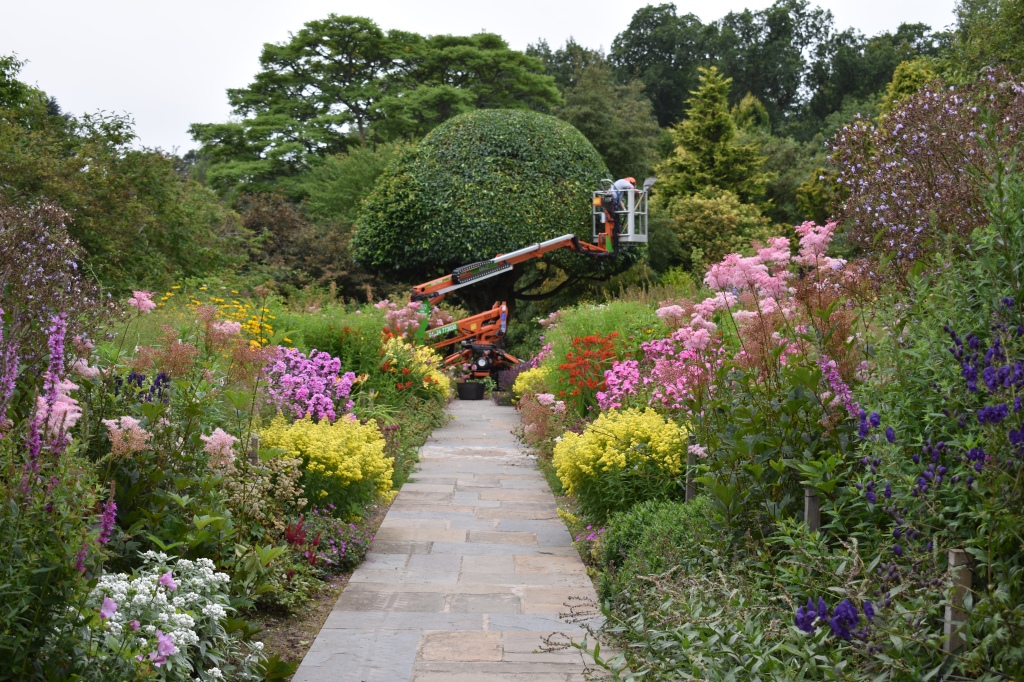
The usual hedge cutting is to be limited this year. The MEWP (Mobile Elevated Working Platform) has been hired for three weeks only and has to catch up with the Portugal laurels which didn’t get their usual spring trim. So cutting will be a matter of prioritising. The egg and eggcups will of course be trimmed and some of the estate hedges – otherwise it will depend on how much can be fitted in. With reduced staff and no volunteers, grass cutting is also reduced and weeding has often, reluctantly, to be relegated to second place.
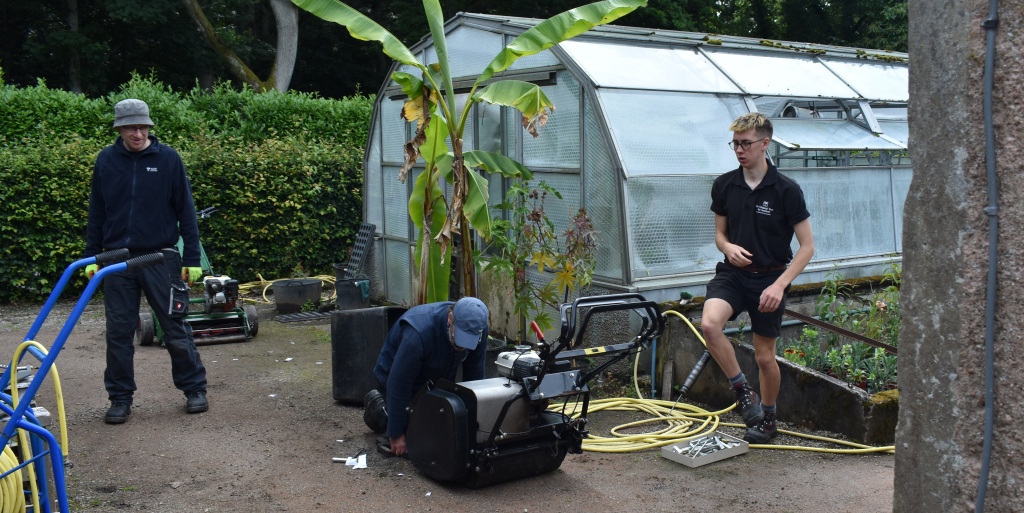
This month it is the salvias and other labiates that catch my attention. There are so many thriving just now and I am struggling to name them all.
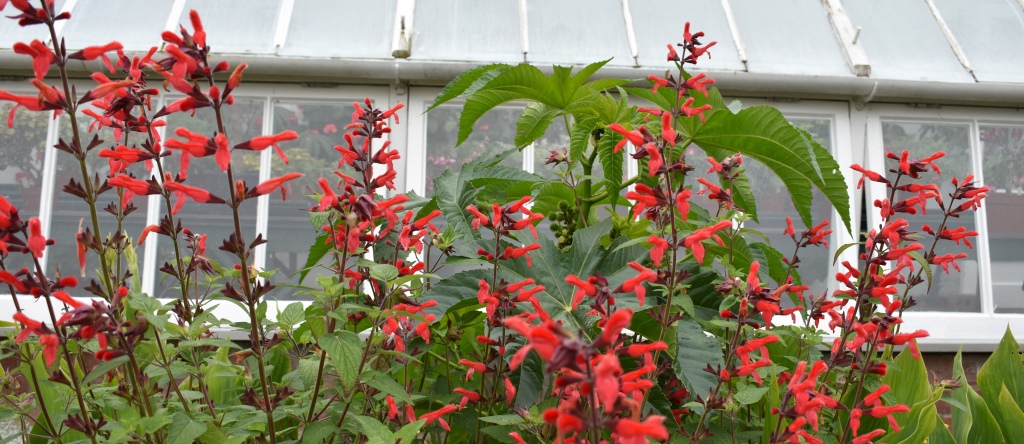
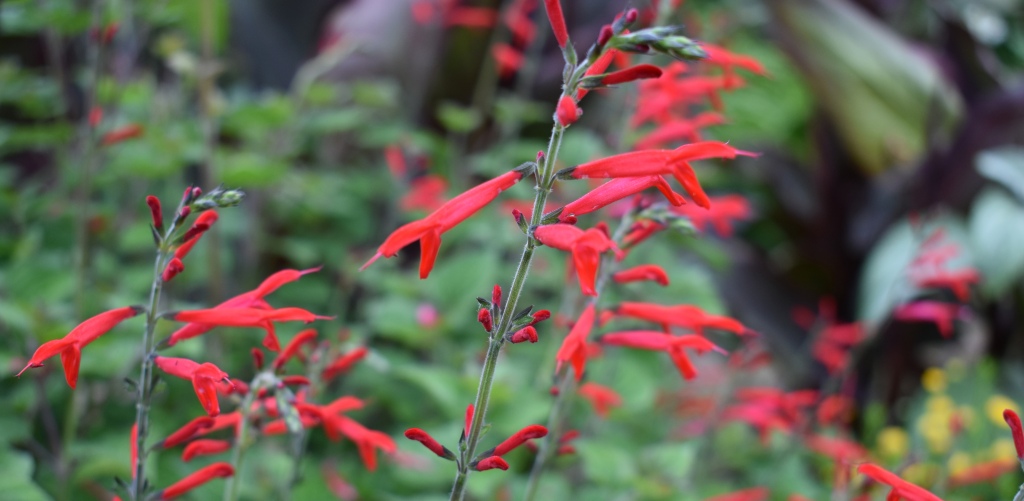
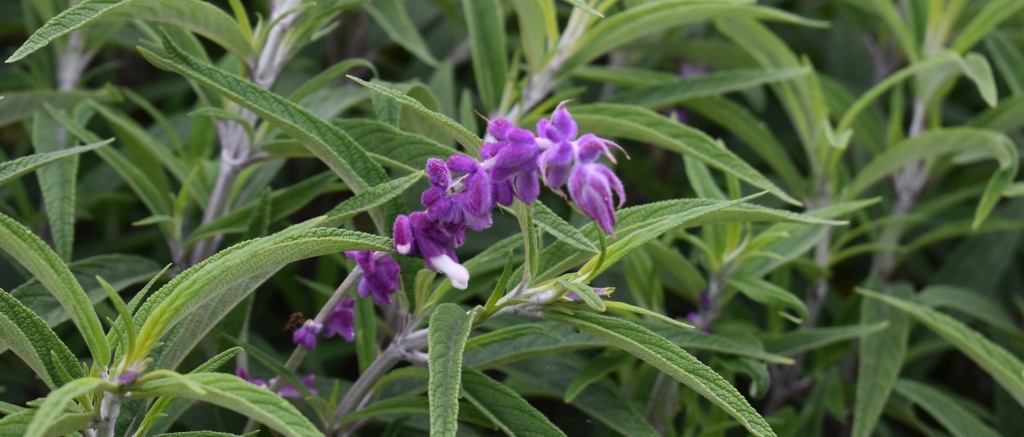
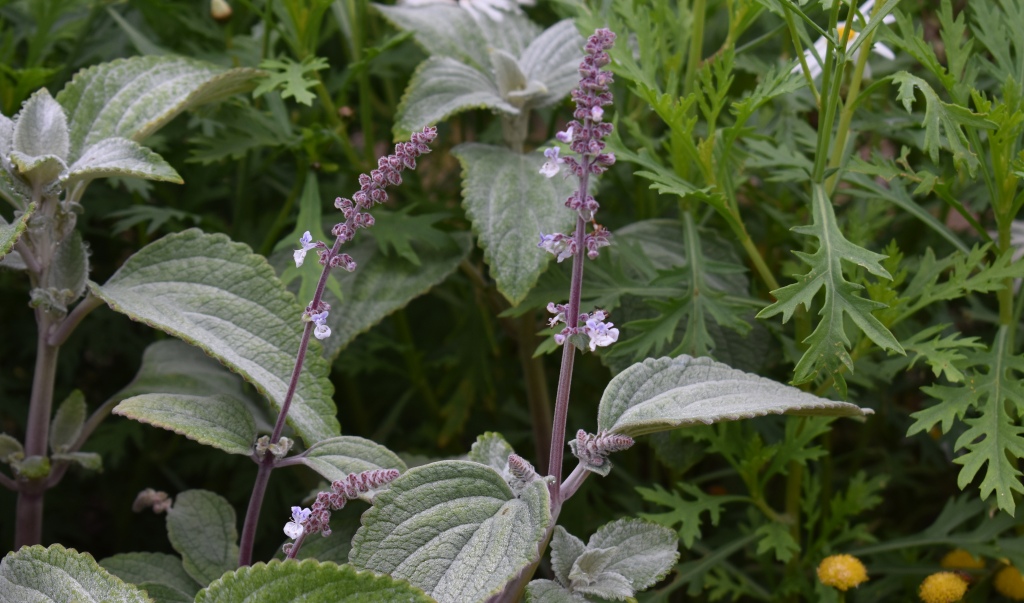
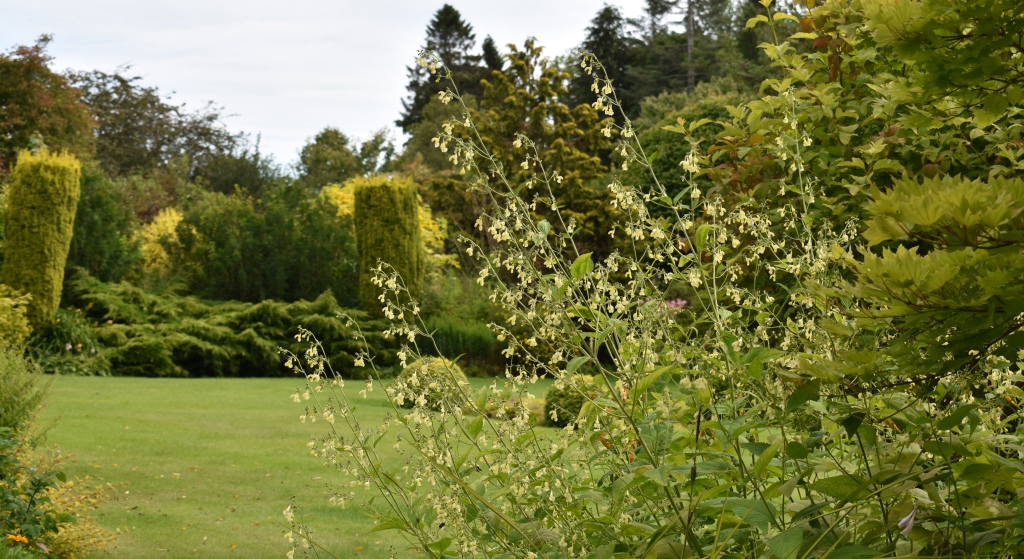
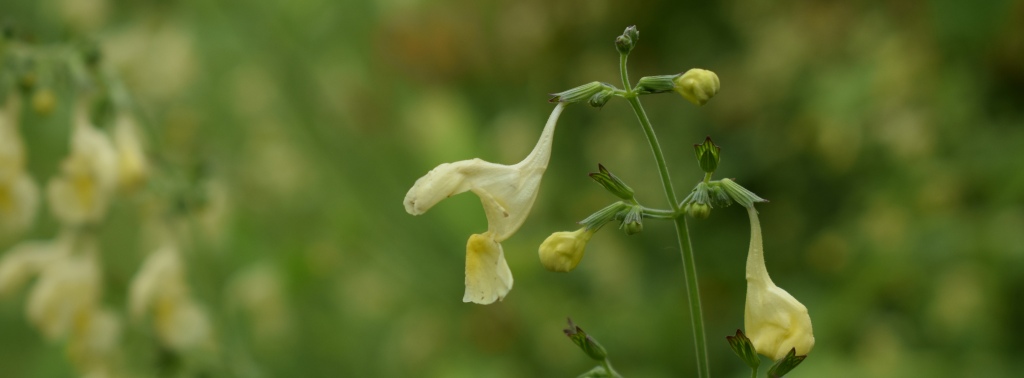
Ruminating on the name salvia and its meaning ‘to heal’ and partly prompted by a beautifully illustrated book I have just purchased – Scottish Plant Lore – I end up thinking about physic gardens and weeds. This garden at Crathes has been cultivated since at least the sixteenth century. Initially a physic garden would have been essential for the castle community. Two brothers of Alexander Burnett (the laird associated with the major rebuild of the castle in around 1596) were physicians, and letters in the family papers show that advice was given to Alexander and his son as to which herbs they should use for various ailments. The plants required by medieval physicians were native plants or early introductions – maybe connected to the monastery physic gardens. Herbalists still use some of these plants today and perhaps you take a few in your herbal teas. Many of the plants of the physic garden continue to grow at Crathes; not all are welcome. The Royal Botanic Garden Edinburgh (RBGE), which started off as a physic garden beside Holyrood Palace, celebrates 350 years this year. Scottish Plant Lore was originally published by RBGE in 2018 using illustrations from its collections.
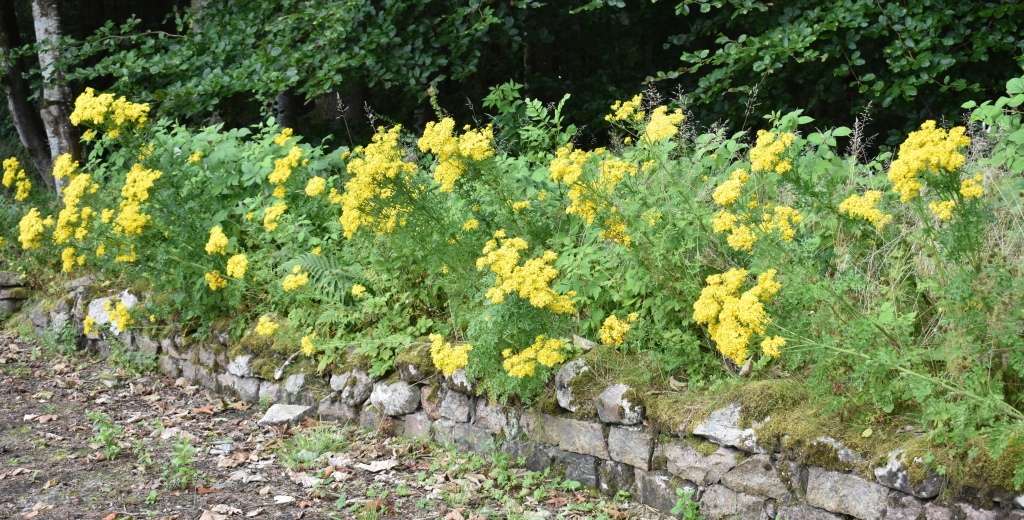
Ragwort, Senecio jacobaea, is one of those weeds that it considered noxious under Government regulations (UK). It is poisonous to cattle and horses which will sometimes eat it. Scottish Plant Lore tells me that in the Western and Northern Isles it was used to deter mice, for weaving baskets, and for dyes – especially in the Harris tweed industry. Medicinally it is described as an astringent and diruetic. It is good for wildlife, and is the food plant of the cinnabar moth. The moth is not common here, but I have seen near Arbroath. Both caterpillar (black and yellow stripes) and adult (black with red markings and underwings) are striking. The genus names remind us of some of the ragwort relatives that grow in the garden – silver ragwort, Senecio cineraria, and the daisy bush, Senecio greyi (synonym Brachyglottis greyi). The ligularias, of which Crathes has a good few, are also related to the ragwort.
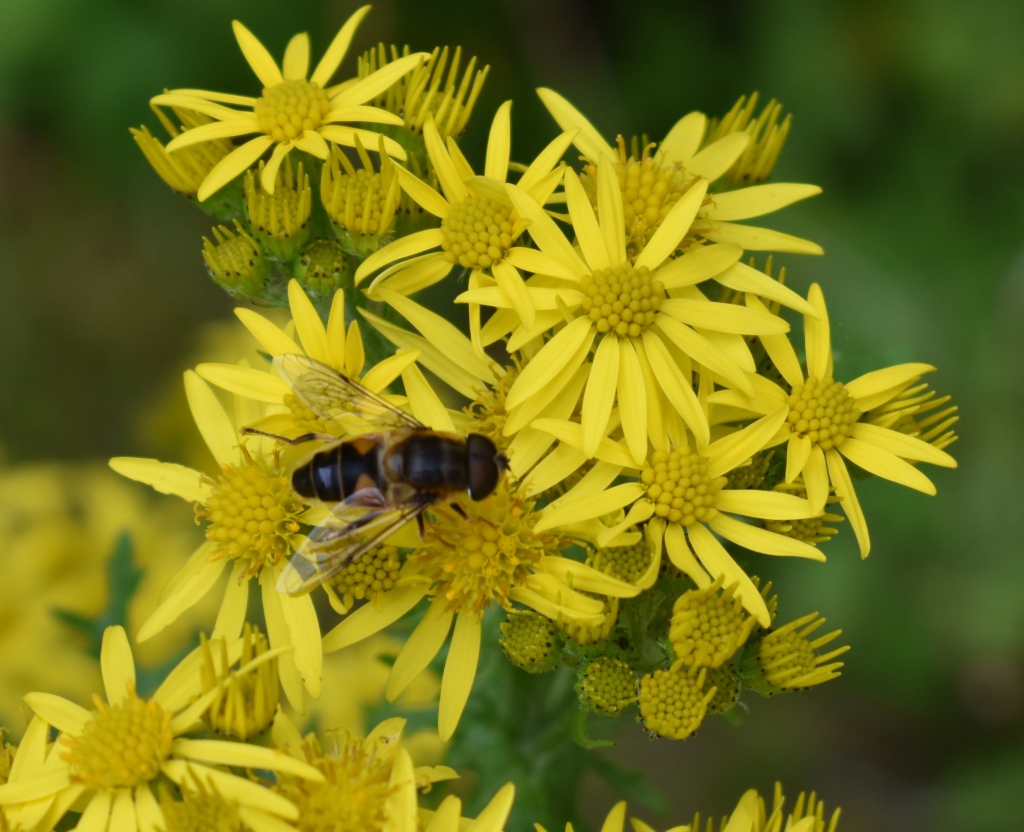
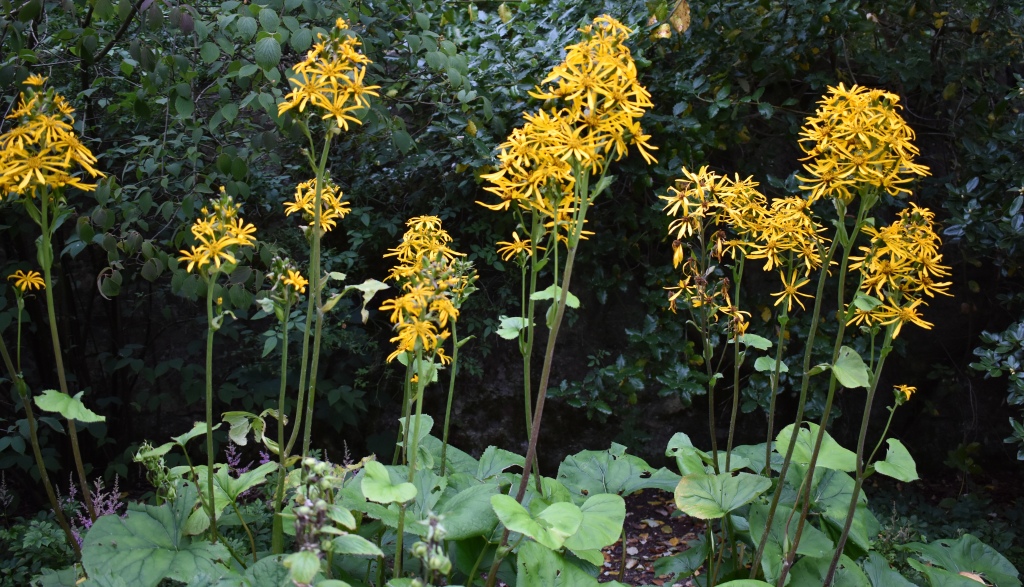

The common nettle, Urtica dioica, has been useful to humans for thousands of years. It is full of vitamins and minerals which provided a welcome tonic to our ancestors in the spring. Joanna was tackling nettles in the stumpery last week. She reacts badly to the stings and was glad to see the back of them. Whilst nettles are a nuisance in the garden, they provide the food plant of the tortoiseshell, red admiral, peacock and comma caterpillars so their persistence in places around human occupation is welcome. Incidentally, there do not seem to have been so many butterflies around this year as in 2019. Another native that is proliferating in the Walled Garden is Angelica sylvestris. It seems to be popping up everywhere. It is apparently good for the digestive system.
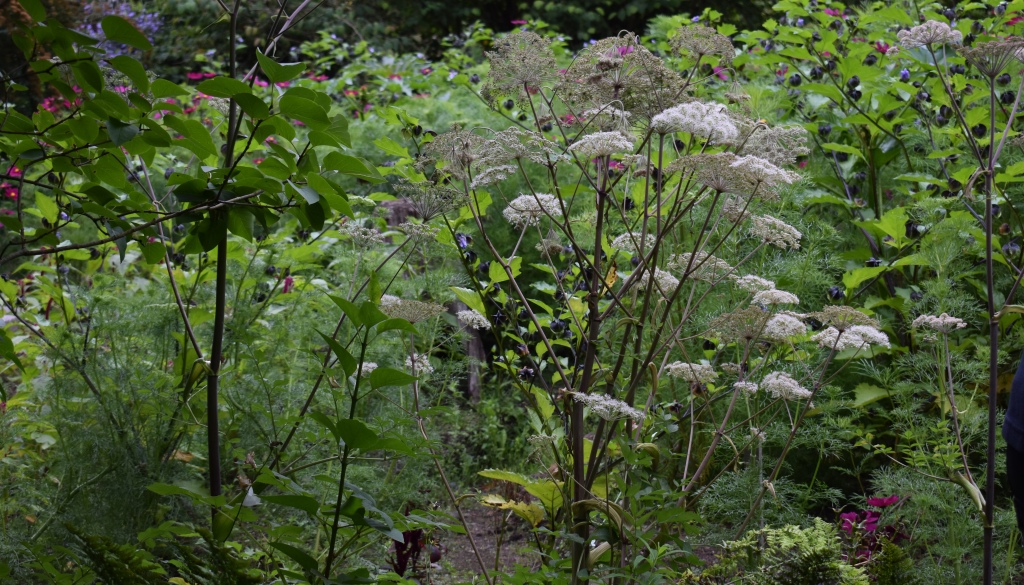
A weed less common in the average Scottish garden is the greater celandine, Chelidonium majus, – of the poppy family and not at all related to the better known lesser celandine, Ranunculus ficaria, which is of the buttercup family. Both these celandines are regarded as weeds in the Walled Garden. The greater celandine, however, may have a direct link to the Crathes physic garden. Possibly a native it is rare in the north of Scotland but tends to be found around monasteries and sites of probable ancient physic gardens. It is said to have been used to sooth sore eyes, but it is not recommended today. It has survived at Crathes and may be tolerated to a degree because of its historical connections. It has spread rather in the Camel Garden taking advantage of the Covid 19 shortage of staff. As I look round the garden I think of the old adage ‘one year’s seeding, seven years’ weeding’.
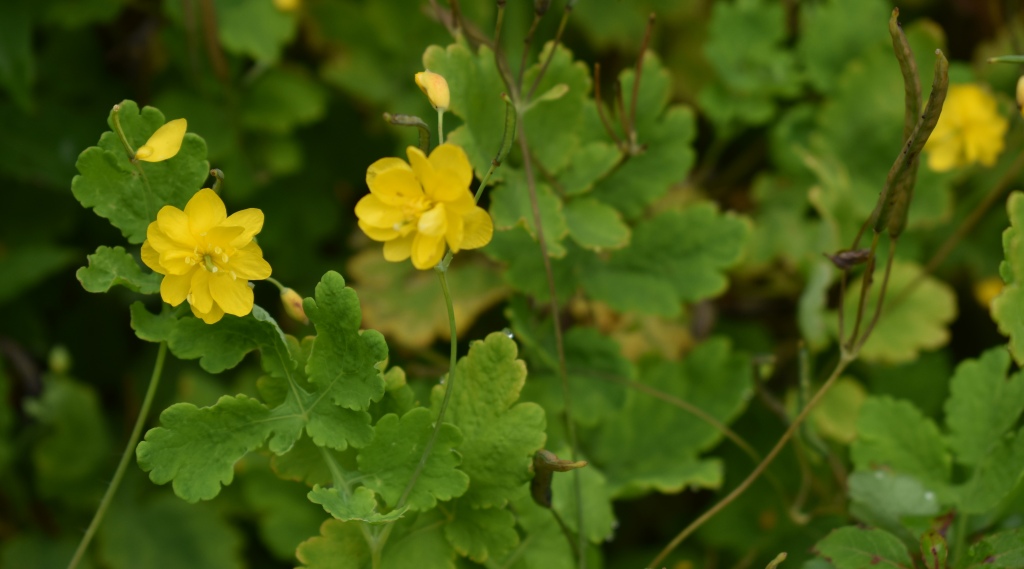
Greater celandine will not be a major problem in future months, but ground elder, Aegopodium podagraria, might be. There had been a concentrated effort to rid the Trough garden of this pernicious weed in 2018/19, but give it an inch… It is not so much the seeding that is a problem, but the invasive rhizomes. There is no room for it in the Walled Garden. Reputed to have been introduced by the Romans, it is useful for salads and is said to cure gout. It rambles round my garden and, unable to keep it at bay, I’ve decided to enjoy it – the flower is not unattractive. But will I let the rose bay willow herb have its way?
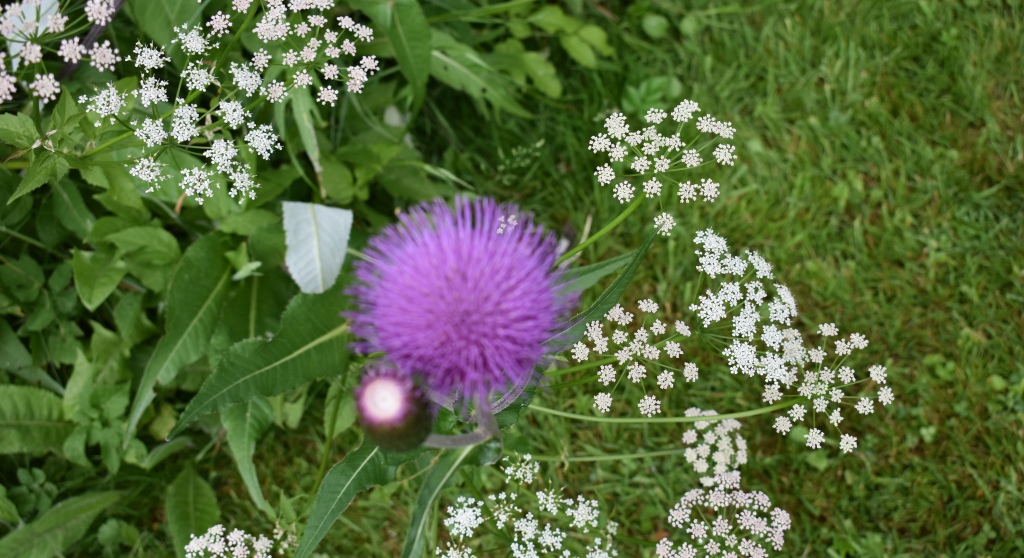
Yarrow, Achillea millefolium, is doing well in the meadow behind the Viewpoint. In the Walled Garden related species and cultivars are popular herbaceous flowers. In the past yarrow was used for healing wounds and easing piles.
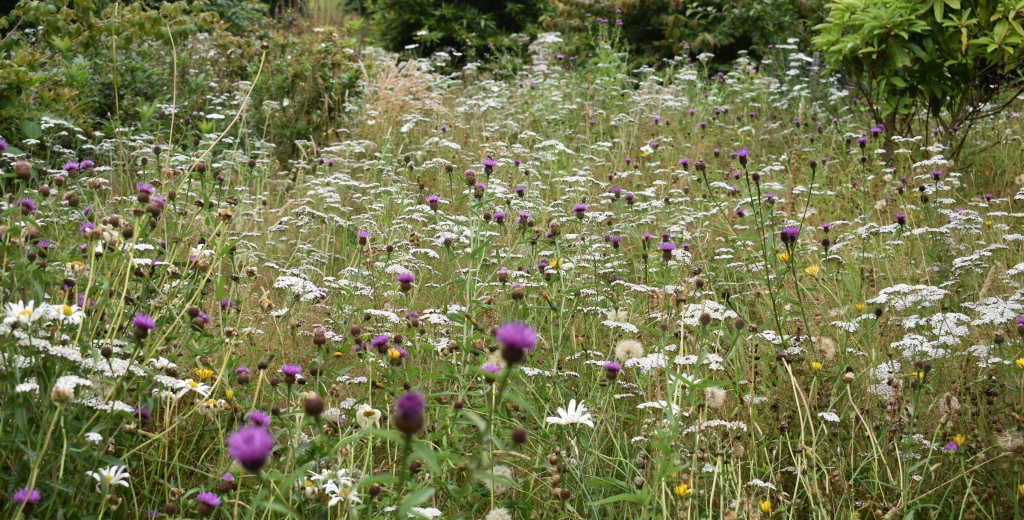
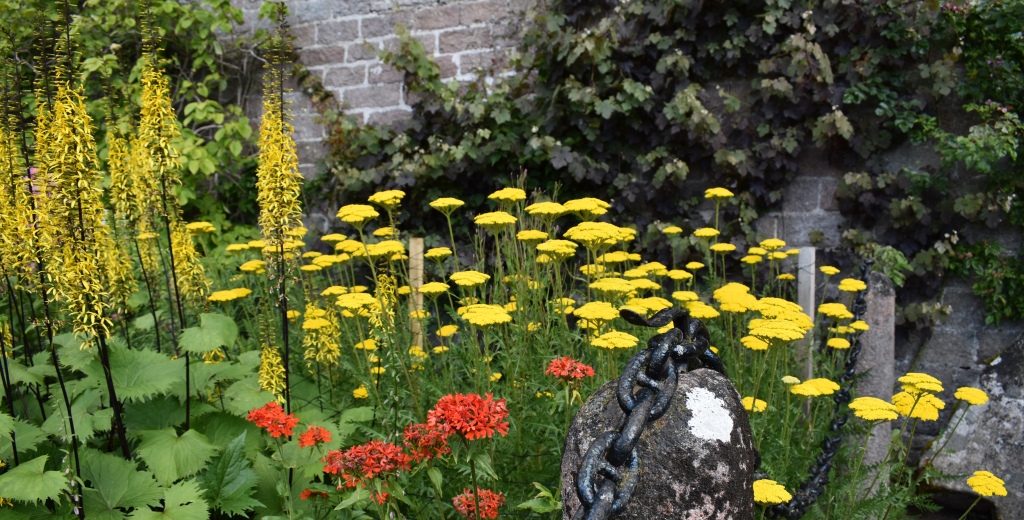
The meadowsweet, Filipendula ulmaria, which is flowering just now in damp field edges and hedgerows would have been much used in the castle in medieval times. Fresh or dried, it could be strewn on the floors of the castle to counteract the less pleasant smells of the times to be swept up and discarded when necessary. In the garden we find Filipendula rubra ‘Venusta’ – from North America – pink and fluffy like candy floss and attractive even after the petals have fallen. You can see it on the Double Herbaceous Border at the top of this post. I mind the late Peter Sim giving me a root to smell when he was transplanting them. It took me right back to my childhood and those round tins of germoline! The scent is apparently methylsalicilate – oil of wintergreen and akin to aspirin, so medicinally it could be used as a painkiller.
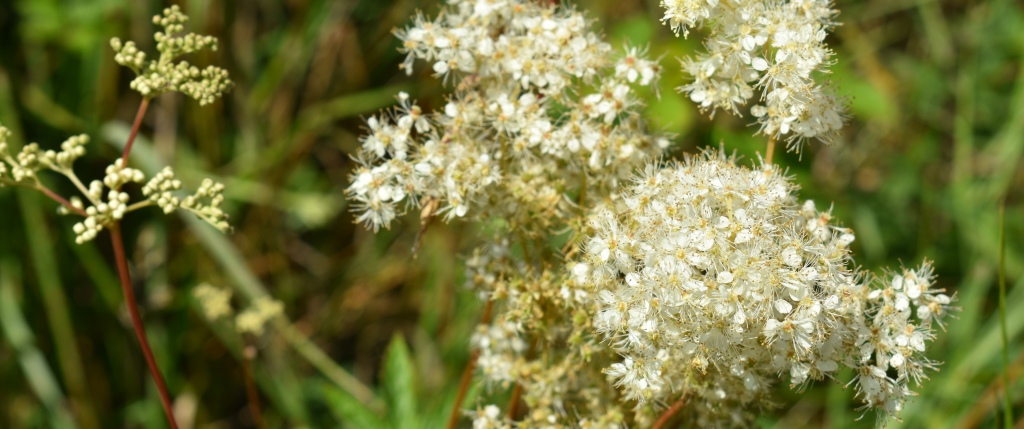
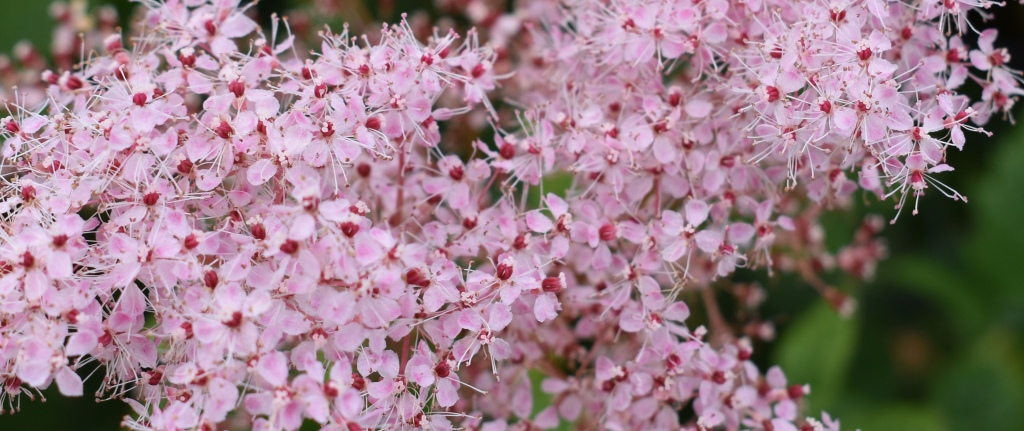

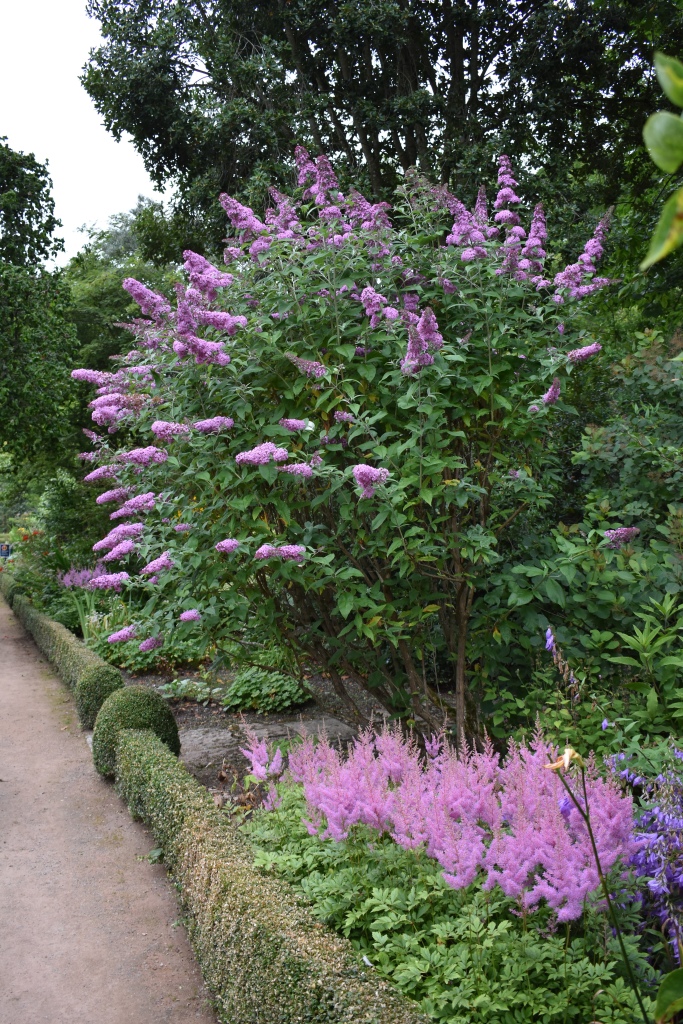
A visitor once referred to the many buddleias in the garden as weeds, until I pointed out that they were different varieties or cultivars. A rather good combination of buddleia and astilbe occurs on the Doocot Border.

Enough of weeds. There are some lovely plantings in the garden. The Blue and Pink Border has gone over in part, but behind on the wall a mauve clematis blends well with the surrounding flowers. In the foreground is Aconitum napellus which can only be pollinated by the long-tongued bees because the nectary is found high up in the hood of the flower – furthermore the bee has evolved to cope with the high alkaloid content of the nectar which means the shorter tongued bees cannot steal nectar by making a hole through the hood (Wikipedia). The aconitums are sometimes called the poor man’s delphiniums since they are easier to grow. They are extremely poisonous, but were used in the physic garden for a range of afflictions. The clematis is listed in the database as Clematis ‘Tage Lundell’ (alpina group), but I am inclined to think this a mistake. It looks to be of the viticella group which would fit for Clematis ‘Mrs T Lundell’. Tage Lundell was a twentieth century Swedish plantsman and enthusiastic plant breeder. He named ‘Mrs T Lundell’ after his wife though I have not been able to find her given name. Whatever the truth of the matter, the clematis mingles beautifully with the everlasting pea, an unnamed lathyrus, and with the Veronicastrum virginicum ‘Fascination’.
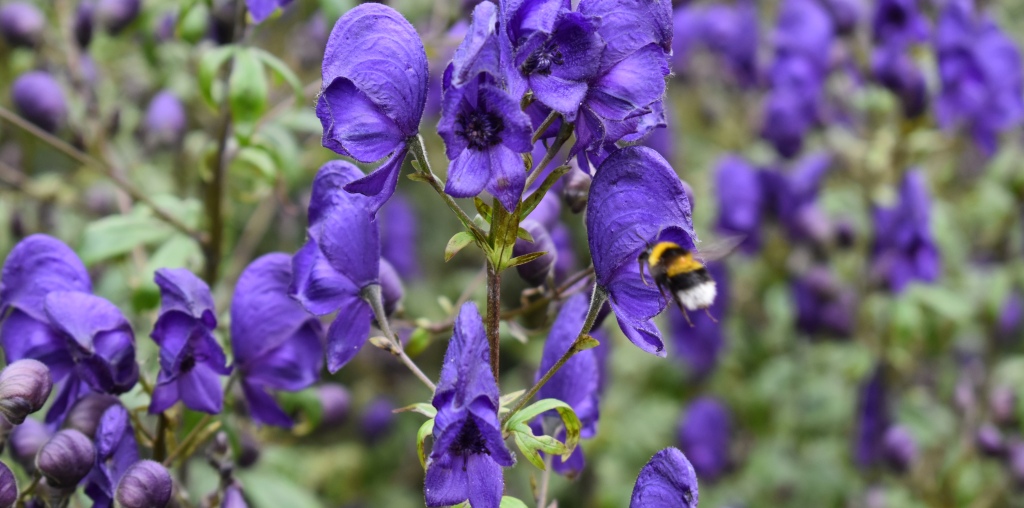
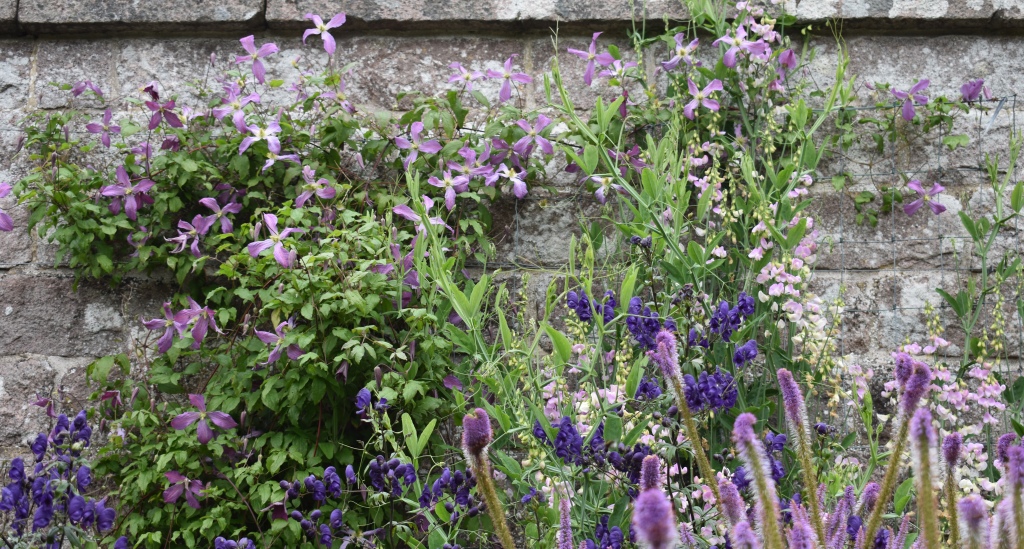
Next week’s work is to learn a little more about the salvias.
Take care
Kenicer, Gregory J, Scottish Plant Lore (2020 Edinburgh).
Keep the posts coming Sue, it’s great to see Crathes – and the gardeners!
LikeLiked by 1 person
There’s always something new to think about!
LikeLike
Please keep the posts coming Sue, it’s great to see Crathes and the gardeners
LikeLike
A lot of the plants seem to have been cure-alls. I’m enjoying my home picked peppermint tea at the moment.
LikeLike
I learn more every time I read these blog posts. Thank you!
LikeLiked by 1 person
I learn a lot in the writing of them!
LikeLike